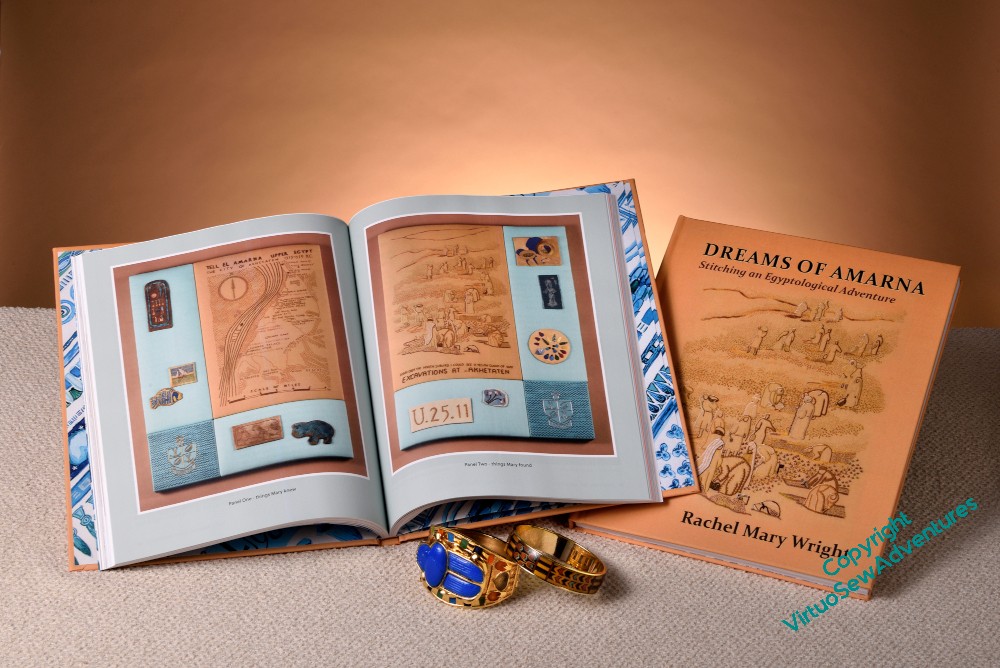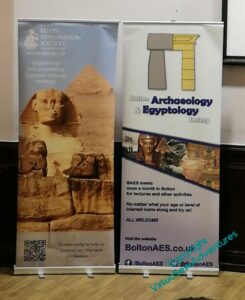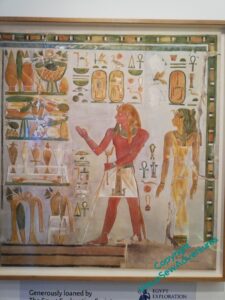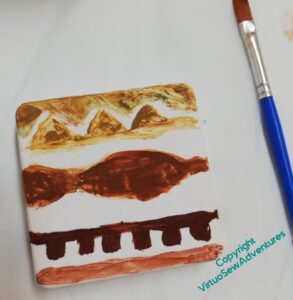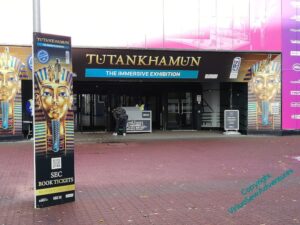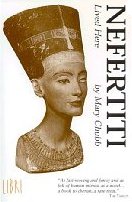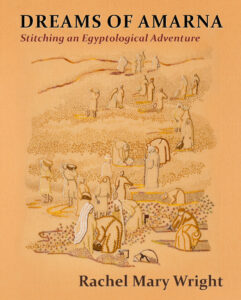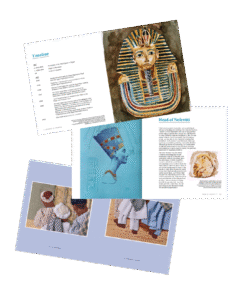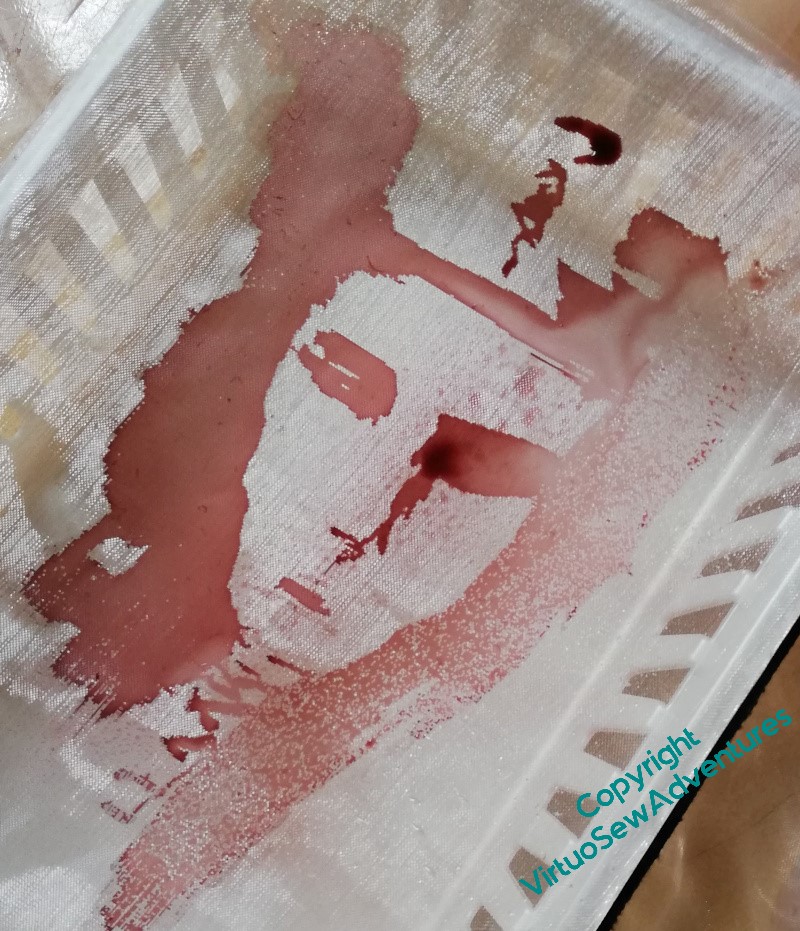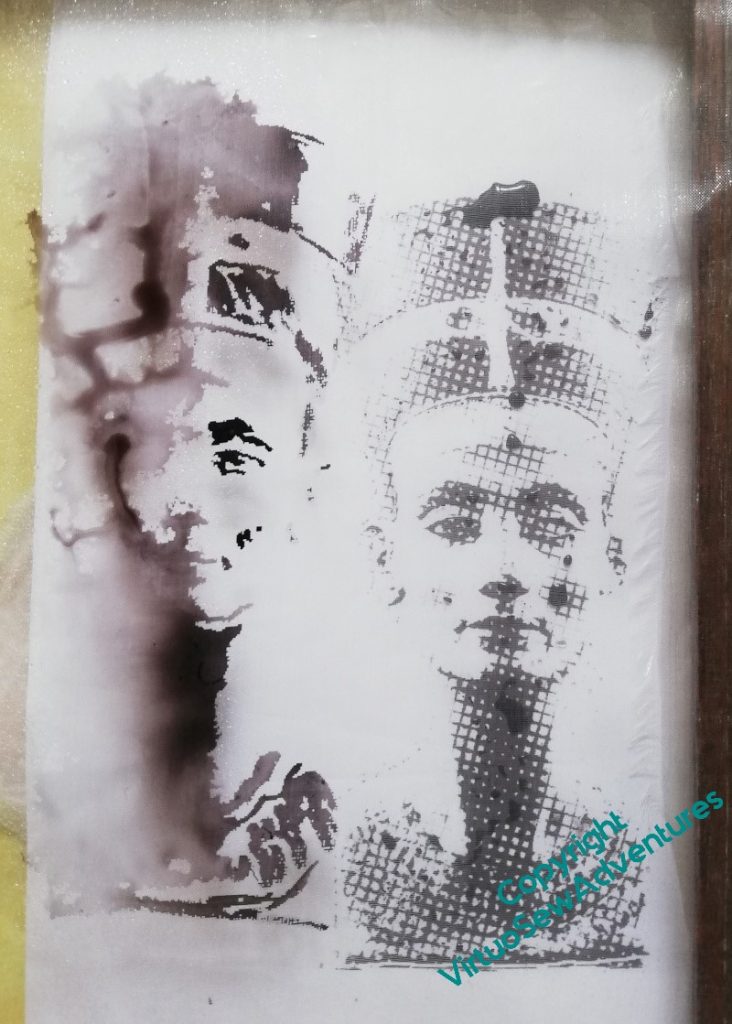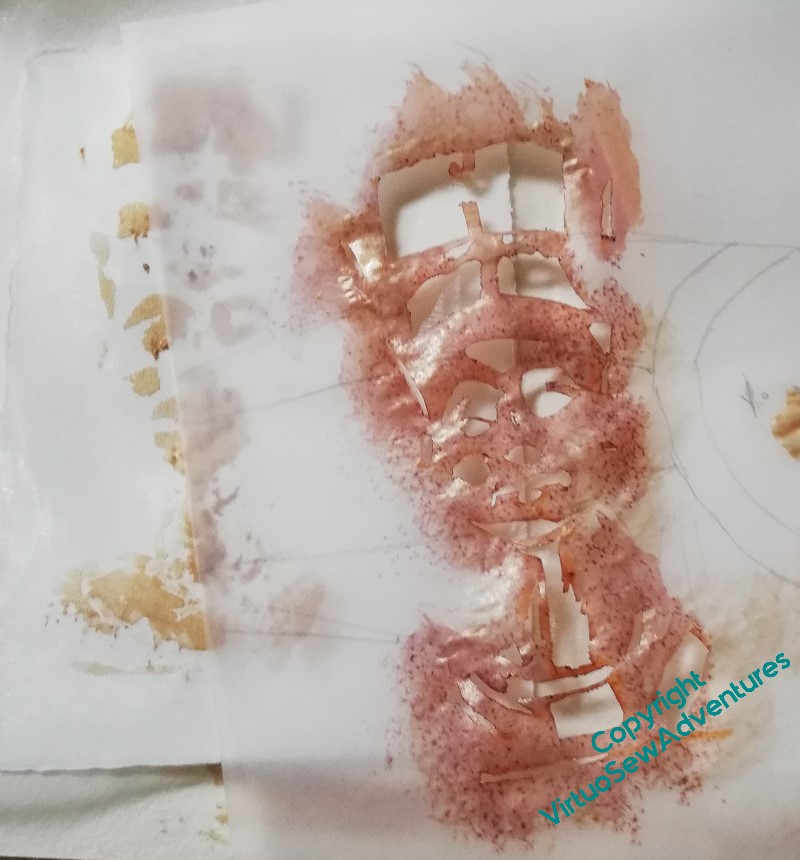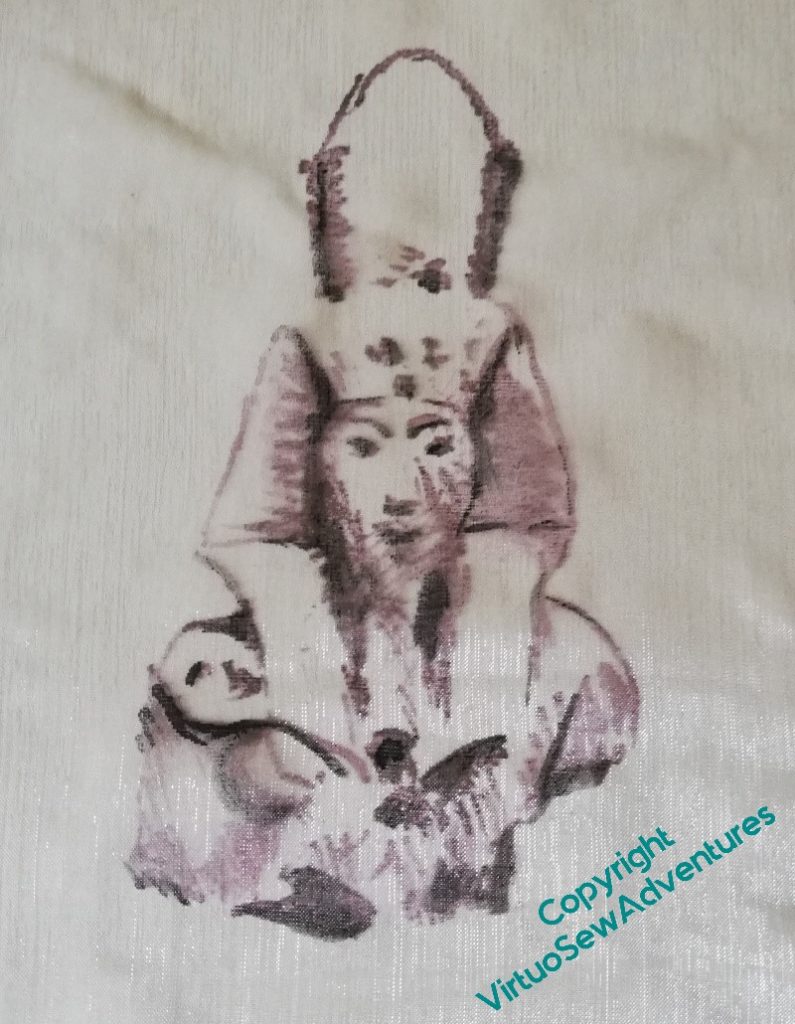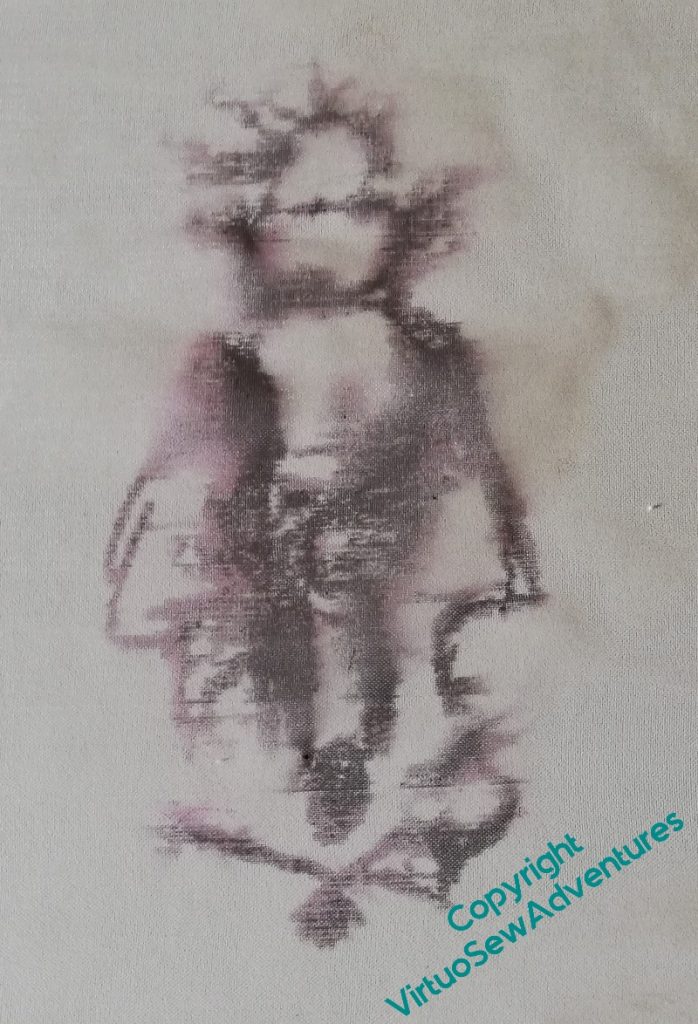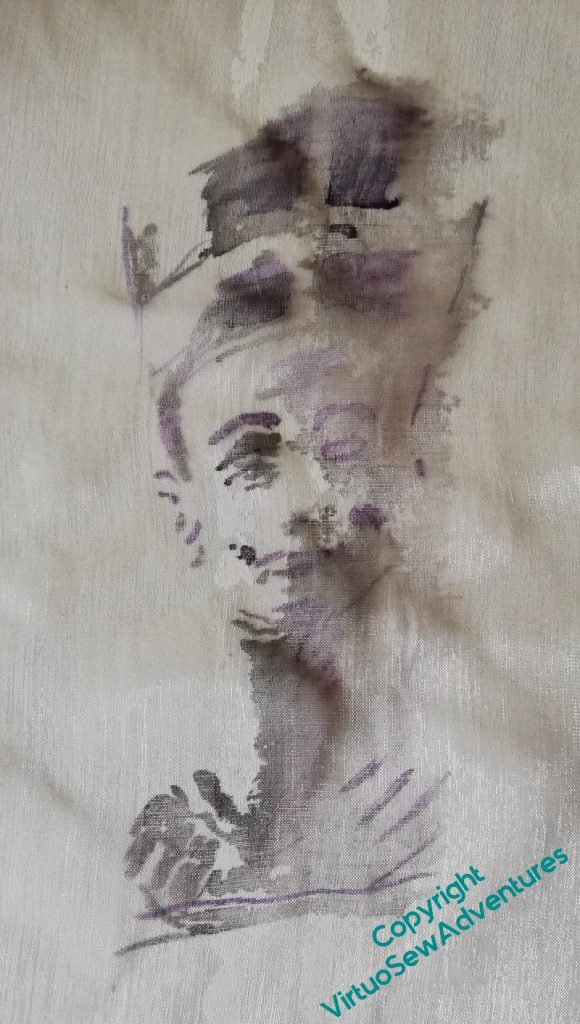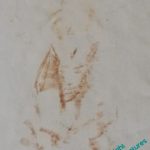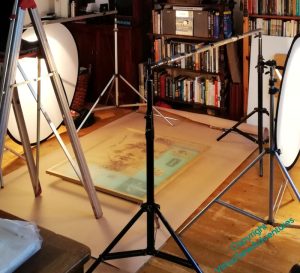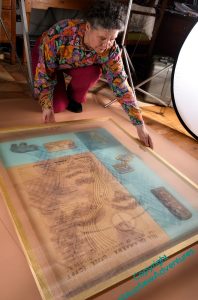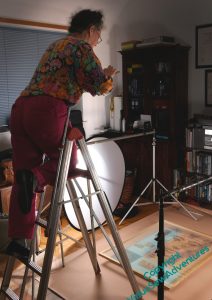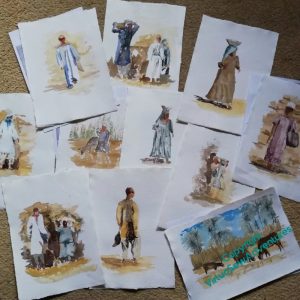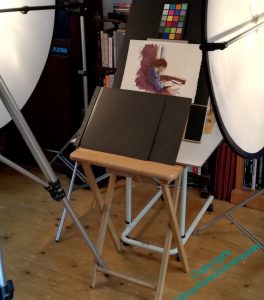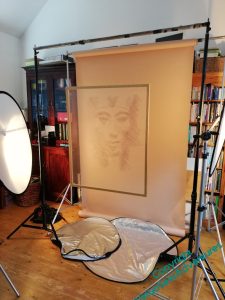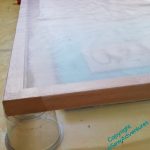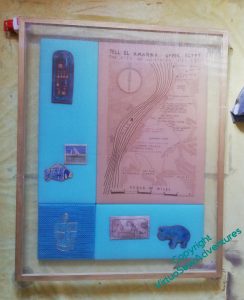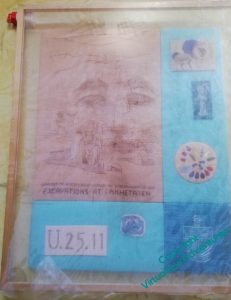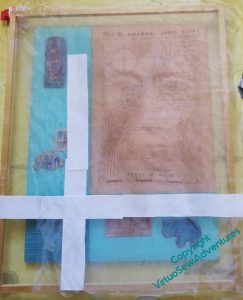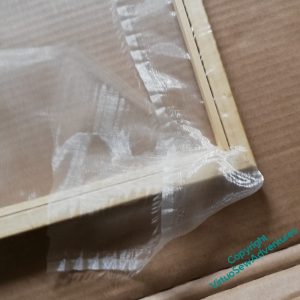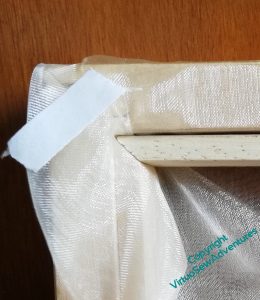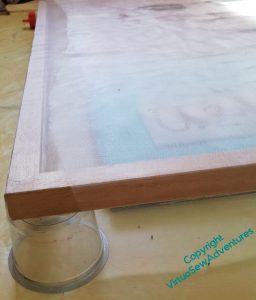Tag: Dreams of Amarna
News for this week
First Newsflash

A few weeks ago, I listened to the FiberTalk podcast episode with Tanya Bentham, and left a comment to say how much I’d enjoyed it. I had a reply quite quickly from Gary Parr saying “Thank you for your comment. I’ve just been looking at your blog, would you like to be on the podcast yourself?”. It seemed like it would be fun, so I said Yes.
It was fun!
Gary had clearly been rummaging on my blog to find things to talk about, and I think he found some interesting questions to ask. Certainly he gave me a great deal to think about!
You can find the podcast episode here on the FiberTalk website: https://wetalkfiber.com/2025/11/16/stitches-and-stories-with-rachel-wright
Or you can watch it here on YouTube: https://youtu.be/TGEJw_q8tOA
Second newsflash
I will be joining the Embroiderers Guild UK on their stand at Knit And Stitch, Harrogate, on Friday morning. I’ll be happy to talk about embroidery in general and Dreams of Amarna in particular, and I will have my pens all ready to sign copies of “Dreams of Amarna – Stitching An Egyptological Adventure”!
Another Egyptological Outing
In the spring, I went to a Study Day in Bolton, all about Mummification, and a few weeks ago, I went to another, this one about Egyptian art, artists and art materials.
Bolton has an extensive Egyptological collection, has been associated with the Egypt Exploration Society from the beginning, and is still very much so. What’s more, the Curator, Ian Trumble, wrote the Foreword for “Dreams of Amarna”, and did some sanity checking to make sure I wouldn’t give any Egyptologists conniptions!
Part of the inspiration for the Study day was a temporary exhibition based around one of Carter’s watercolours, a record of a wall painting from Hatshepsut’s tomb, currently on loan from the EES.
We had an introduction to hieroglyphs, starting beside the painting and then touring the galleries, a handling session, and a workshop which involved some experimentation with pigments and paint. This is based on some research by Dr Stephen Buckley, who is a chemist with Egyptological leanings, and has been working on resins and oils and their usage in ancient Egypt. It’s astonishing to see how much our knowledge has exploded as it becomes more possible to analyse non-invasively.
If you look at this little tile, you can see the top two lines of pattern are pigment and water, which is what a lot of people have assumed the Egyptians used to do their paintings.
You can see that the result is blotchy, and I can tell you from experience that it was really difficult to apply: it stayed on the brush, it clumped, it refused to stay where it was put, it was just dreadful. While we were struggling, Dr Buckley made us some paint from a recipe he’s worked out from an analysis of tomb paintings.
Well now, that was altogether better. It flowed, it stayed where it was put, and it diluted into something sensible and not into something blotchy. I was delighted with it to such an extent that I said audibly “Now this is a paint I could use!” and startled a grin out of Dr Buckley!
The day started however, with a lecture from Professor Joann Fletcher, who’s known to many from her TV appearances. She is just as authoritative and enthusiastic in real life, and she took us on a whirlwind trip from the predynastic period all the way through to the recording artists, like Harold Jones or Howard Carter, who were such an important part of the team in any excavation in the early 20th century.
And look what came up to remind me of one of my favourite “Dreams of Amarna” pieces…
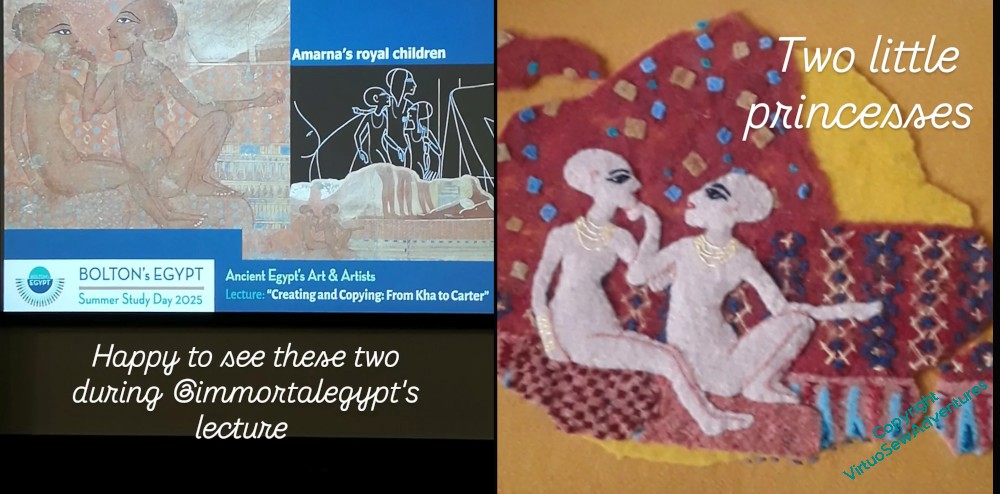
An Egyptological Outing..
Just because I have completed my Egyptological Embroideries (possibly not for ever…!) and have moved on to the early Roman period (Placidus) and the Early Medieval period (Aethelflaed), it should not be taken to mean that my interest in Egyptology has waned..
In fact, I heard of this Immersive experience from Alan Murphy, who helped me turn my manuscript and pictures in to a book, on behalf of the Embroiderers Guild. He and his wife saw the exhibition – Experience? – in London, and loved it. But they were there on the last day, and the next venue was to be the Glasgow Exhibition Campus. Well, that’s ok, there’s a train up the west coast that goes to Glasgow, and the Exhibition Campus has its own station on the local rail network. So off I went…



Like most of the major travelling exhibitions of this type, it began with a sequence of huge information boards, establishing context and ensuring that everyone has some similar understanding of the subject of the exhibition. In this case, that covered a canter through the history of Ancient Egypt, and the Eighteenth Dynasty in particular, and then a further exposition of Howard Carter’s career. Then, guarded by a spectacularly moody six-foot animated Anubis, pacing between a pair of mirrors, there were two rooms of reproductions of a variety of finds from Tutankhamun’s tomb, as well as some of the drawing and reports made by Carter at the time. All interesting, nothing I’ve not seen before in one or other exhibition over the last twenty years.
However, the finds were not really the point of this exhibition. That came from a huge hall on the walls and floor of which were projected a whole series of images and realisations, some relating to the excavation, some to the buildings and geography of Egypt, and some to Tutankhamun hiself.







These were surprisingly magical, in spite of the occasionally rather overblown script and very tremendous music, and I happily sat through it all twice, before moving on to the next section, which I can’t show you, because it involved Virtual Reality headsets. Again, these mixed realisations of ancient Egyptian belief – the journey of the pharoah’s soul from his tomb to his judgment before the gods – with a tour of the camp where the Egyptologists were based.
Now, I’m not automatically an enthusiast for technological presentations, because it can be very hard to balance the technology and the story. The idea of the immersion in this created world is wonderful, but it’s easy to jolt the viewer out of it with anything slightly out of whack. By and large, that didn’t happen to me. I was enchanted by much of what I saw, entertained by almost all of it, and delighted to find myself able to raise a lantern in my hand as I toured the excavators’ camp.
And it gave me some more sources for the Lotus Coat, when I get around it, so you will probably see more of my Pictures From The Exhibition…
A website for Dreams of Amarna
The Dreams of Amarna book and project now has a website!
Not without some muttering and spluttering, I admit. Many years ago, I had some understanding of designing websites – quite simple ones, but still, I could do it.
That is no longer the case. There is altogether too much to deal with, too many different browsers and devices, too many changes of standard and best practice, not to mention technologies.
So instead, I used one of the templating services, said to provide an intuitive interface for developing a reliably working website.
I would argue that “intuitive” is entirely the wrong word, but after about five do-overs, I got there in the end.
It’s not wildly complicated, and it is no substitute for this blog, which will continue as before. It’s not meant as a substitute.
It is meant, in fact, to make life easier all round. For anyone specifically interested in the Dreams of Amarna, anyone who wants to help me plan and prepare the hoped-for exhibition, anyone who wants me to give a talk for their group – there’s a single point on the web where they can find me, and from which they can contact me.
I should probably have tried to get it ready earlier, but then, I hadn’t had Bernard Rose’s fabulous product and author photoshoot before…
Very Exciting News!
My most long term readers may recall that when I first started this blog, it was for accountability, in a sense.
I had plans for a two-panel embroidery inspired by the book “Nefertiti Lived Here”, by Mary Chubb, and with Life the way it is for all of us, I thought the only way I would keep at it was if I’d said, in public, that I was going to do it.
Well.
Some twenty-odd years later, that two panel project turned into 27 embroideries, 117 watercolours, and A Book!!
You may think I’d have nothing left to say, given how much I wrote on this blog as I was making the pieces, and when someone said “Why don’t you write a book?”, I rather wondered about that myself.
But it turns out that with the distance of having done a lot of other embroidery since, and a lot of painting, and a lot of thinking, there’s actually a lot to say. Not about the technical aspects; there are plenty of books of technique that as specialised books have the space to explain techniques in detail. But as someone who developed their own approach to design and design development, what I can do is share some of that approach.
The Embroiderers Guild have now published “Dreams of Amarna – Stitching An Egyptological Adventure”, and it is available to buy from their webshop now. It is copiously illustrated, with photographs by the wonderful Bernard Rose, showing embroideries and paintings, all done by me. I am thrilled to bits, and I hope you will love it, too!
Another day of photography (second helping)
The complication of the overlays against the panels is introduced by the facts that the overlays are slightly bigger than the panels, they are transparent, and the overlays themselves are heavy. In any final display, the overlays will be screwed to the wall, but we couldn’t do that in Bernard’s studio!
When we took the original photos, the panels were put on the very edge of a table, tied using fishing line through that convenient gap between the lower panels and the higher ones to an extremely heavy tool box, and with the background hanging behind. Since I wanted to include the frame of the overlays, that wouldn’t do.
So here is what we ended up with! A section of background is laid on the floor, with the panel laid on it. Then we set up a set of tripods on either side, poles between them, and ran a length of fishing line from pole to through eyelets in the back of the frame. We get the shadow that reveals the overlay to be a separate thing, and several ways to adjust the whole thing until it works.
It did rather turn the studio into a low-budget version of that scene from the film Entrapment where the cat burgler is practicing avoiding a mesh of lasers with a mesh of strings with bells on, but that just meant a certain hilarity entered the proceedings!
It also meant the deployment of a ladder for the viewpoint to be high enough. It’s a proper ladder for the purpose, and it was sturdy enough – Bernard was happily standing on the platform at the top to take the final shots, which I wasn’t quite up for, as you see.
I do think the set up will produce the right photos for the purpose, but my goodness, photography really isn’t “Just Point And Shoot”. Bernard also tweaks the raw files to make sure that they bring out what he saw when he took the photos, which means that we have something really good to start from. Technology has improved immeasurably since Mary Chubb’s time, but even so, there are losses in quality as you add processes, and to have something decent at the end of a sequence of design, layout, and printing processes, you have to start with something really excellent.
Another day of photography (first helping)
I’ve been working hard on the manuscript of the book I’ve written around the Dreams of Amarna, and one of the things I want to do is stitch the story together with pictures of the ordinary Egyptians working on the dig. They are honoured in the stitchery (View of the Excavation and Loading The Felucca), but that didn’t seem quite enough.
So I’ve been doing lots of little watercolours of labourers, basket carriers, and fragments of the dig and the scenery, and now I’ve sorted out the overlays (there will be more about my experiments with ink and inktense later), I bundled up the whole kit and caboodle and took it across to Bernard Rose Photography to see what he could do.
We rattled through the watercolours in fine style, as apart from occasionally flattening a piece of paper (I tend to paint a bit sloshy…!) there was little adjustment needed.
Then, however, matters became more complicated… The overlays are big, and the fabric is slightly shiny, and I hadn’t worked out how to hang them. So we started with the easy bit – overlays on their own, in front of a background. You get a hint here of the reflectors spaced all around, and just the general sense of engineering involved. There are two pairs of tripods with poles between them, one with the background, the other supporting the overlay, suspended on fishing line through eyelets. Then there are the tripods with the diffusers on, and out of shot, there’s the tripod with Bernard’s camera in place.
Design placement for the overlays
So, we left the overlays mounted, but determining placement wasn’t entirely straightforward.
I didn’t want the images of Akhenaten and Nefertiti over the whole panel, just over the sandy part of it..
So once I was happy with the mounted gauzes, the glue was dry, and the glue pot firmly shut, I got the panels out, laid them on the floor and found some little pots to hold them up at the corners.
You can see from this photo that the gauze is fine enough that it is not going to interfere with the view of the panels – except for those who want to examine very closely, and I think we are going to be able to come up with something for them!
The mounted gauzes are bigger than the panels, deliberately, so I had to take that into account as well. You can see that I’ve not got Nefertiti quite right here – I was using the old overlay to work out placement – she’s too close to the centre.
Once I’d worked out where they were to be placed, I took copious notes. I had to work on the images from the back, because of the size of my padded mat, so I not only had to make sure I had the right placement – I had a story in my head for who would be in front of each panel, and they weren’t interchangeable!
A closer look at the overlays
It occurred to me that I rather skipped over quite a few elements of the rather haphazard development of the overlays, and a slightly closer view of the way the overlays have been managed might be rather interesting, at least for some of you, so here we are.
In fact I got the framer to make two frames, one the frame that will be seen, which is what I painted gold, and the other a fillet, very fine “infill”, in effect, that will not be visible, but will be part of what keeps the gauze tensioned and in place.
Here is a close view of the corner. This is the point where I had quite a bit of wrangling to do. The gauze stretches over the front of the frame, and around the back, and is then caught into the ledge that would normally hold the glass. There is double sided table on the frame, and double sided tape on the fillet, and in effect I used it to tack the gauze in place.
So I worked from front to back, and around the frames, to make sure that the gauze was taut, and on the straight grain. Then we (at this point, The Australian was acting as Studio Assistant!) hammered nails through the fillets and the gauze and into the frame. And then turned it over, all panicky in case something had sagged.
Which, fortunately, it hadn’t. So then I spent a bit more time wrangling the gauze, gluing and trimming it in place. In fact as long as the glue holds long enough to keep the gauze held back until it doesn’t want to straighten into odd directions, that will do me, but the other advantage of copiously gluing the gauze (me and glue – aren’t I being brave!!) is that it now won’t fray.
The next complication is that I need to work out how to get the design element in the right place, given I don’t want it bang in the middle…

